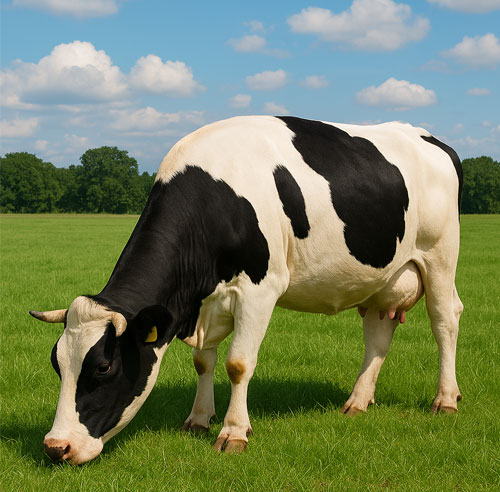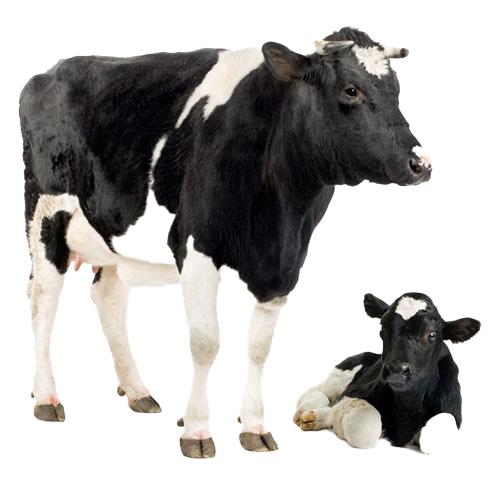The Role of METHPROPARS in Dairy Nutrition
How Rumen-Protected Methionine Improves Milk Protein: The Role of METHPROPARS in Dairy Nutrition
Introduction
Milk protein is one of the most critical quality and economic parameters in modern dairy farming. As global demand for high-quality dairy products increases, dairy farmers and nutritionists are focusing on nutritional strategies that optimize milk yield, enhance milk protein percentage, and improve overall herd health. Among the essential nutrients for dairy cows, methionine stands out as a first-limiting amino acid in many dairy rations. However, due to extensive microbial degradation in the rumen, delivering adequate methionine to the small intestine is a major challenge. This is where rumen-protected methionine (RPM) products, such as METHPROPARS, play a vital role.
This article explores how rumen-protected methionine contributes to improved milk protein synthesis, the science behind METHPROPARS, and practical feeding strategies for dairy farmers.
Why Methionine Matters in Dairy Nutrition
Methionine is an essential amino acid, meaning it cannot be synthesized by the cow and must be supplied through feed. It plays several key roles:
• Protein synthesis: Vital for the formation of casein, the main protein in milk.
• Methyl donor function: Contributes to methylation reactions, essential for DNA synthesis and metabolic pathways.
• Fat metabolism: Supports liver function, reduces the
risk of fatty liver, and promotes energy balance during early lactation.
• Immune function: Enhances antioxidant capacity and reduces oxidative stress in high-producing cows.
Without adequate methionine, cows cannot maximize milk protein production, regardless of other dietary nutrients.
Methionine Degradation in the Rumen
When unprotected methionine is fed to cows, rumen microbes degrade most of it before it reaches the small intestine for absorption. Research suggests that 70–90% of free methionine is lost in the rumen. This means that supplementation with unprotected methionine is largely ineffective.
To overcome this limitation, nutritionists have developed rumen-protected methionine technologies, which allow methionine to bypass microbial degradation and be absorbed in the small intestine where it is needed for milk protein synthesis.
What is Rumen-Protected Methionine?
Rumen-protected methionine (RPM) refers to methionine that has been coated or encapsulated with a protective layer. This technology enables the amino acid to resist rumen degradation and ensures targeted release in the small intestine.
METHPROPARS is a next-generation rumen-protected methionine product, engineered with an advanced protective coating that ensures:
• High rumen bypass rate – maximizes the amount of
methionine reaching the small intestine.
• Optimal intestinal release – guarantees that methionine is absorbed where it can be most effective.
• Improved bioavailability – ensures the cow receives the full nutritional benefit.
How METHPROPARS Improves Milk Protein
1. Enhances Casein Synthesis
Casein accounts for about 80% of milk protein. Methionine is critical in initiating protein synthesis at the cellular level. By ensuring sufficient methionine supply through METHPROPARS, cows can produce more casein, directly increasing milk protein percentage.
2. Balances Amino Acid Profile
Protein synthesis in the mammary gland depends on a balanced supply of essential amino acids. Lysine and methionine are the two most limiting amino acids in dairy diets. Supplementing METHPROPARS along with rumen-protected lysine ensures an optimal amino acid ratio, improving milk protein yield.
3. Supports Liver Health During Transition
In the transition period (3 weeks pre- to 3 weeks post-calving), cows are under metabolic stress. Methionine supports fat metabolism and liver detoxification, reducing the risk of fatty liver and ketosis. Healthier cows channel more nutrients toward milk and protein production.
4. Boosts Immune Function
Methionine is a precursor of glutathione, a powerful antioxidant that enhances immune response. Healthier cows have better feed efficiency and milk yield, with a higher
protein percentage.
5. Improves Reproductive Performance
By supporting liver function and hormonal balance, methionine indirectly enhances fertility. Efficient reproduction shortens calving intervals, sustaining milk protein production over time.

Research Evidence on Rumen-Protected Methionine
Several studies confirm the benefits of RPM supplementation:
• Increased Milk Protein Yield: Trials show that cows fed RPM produce up to 0.2–0.3% higher milk protein.
• Improved Milk Yield: Supplementation can increase overall milk production by 1–2 kg/day.
• Enhanced Feed Efficiency: Better nitrogen utilization reduces waste and environmental impact.
Practical Feeding Strategies with METHPROPARS
• Inclusion Rate: Typically, 8–15 grams of RPM per cow per day is recommended, depending on diet composition.
• Combine with Rumen-Protected Lysine: Pairing METHPROPARS with LYSOTECT (rumen-protected lysine) optimizes amino acid balance.
• Target Transition Cows: Early lactation cows benefit the most from supplementation due to high protein demands.
• Monitor Milk Components: Adjust inclusion levels based
on milk protein test results.
Environmental Benefits of METHPROPARS
Better amino acid balancing means more efficient protein utilization. This reduces nitrogen excretion in manure, lowering ammonia emissions and environmental impact. Thus, METHPROPARS supports sustainable dairy farming.
Conclusion
Rumen-protected methionine is a cornerstone of modern dairy nutrition. By overcoming the challenge of rumen degradation, METHPROPARS delivers methionine directly to the small intestine, ensuring optimal absorption. The result is improved milk protein synthesis, better cow health, enhanced feed efficiency, and greater profitability for dairy farmers. Integrating METHPROPARS into dairy rations is a proven strategy to meet the growing demand for high-protein milk.
FAQs About Rumen-Protected Methionine and METHPROPARS
Why is methionine called a limiting amino acid in dairy cows?
Methionine is considered limiting because it is often the first amino acid to run out in dairy diets. Without enough methionine, cows cannot fully utilize other amino acids for protein synthesis.
How is METHPROPARS different from regular methionine supplements?
Unlike regular methionine, which is mostly degraded in the rumen, METHPROPARS has a protective coating that allows it to bypass the rumen and release in the small intestine.
Can METHPROPARS increase both milk yield and milk protein?
Yes. Studies have shown improvements in both overall milk yield and milk protein percentage when cows are supplemented with rumen-protected methionine.
When should I start feeding METHPROPARS?
The best results are seen during early lactation and transition periods, but it can be fed throughout lactation to support consistent milk protein production.
Is METHPROPARS safe for long-term use?
Absolutely. It is designed to be a safe and effective long-term supplement that supports cow health and productivity.
Does METHPROPARS work best alone or with other amino acids?
While METHPROPARS is highly effective on its own, combining it with rumen-protected lysine ensures optimal amino acid balance for maximum milk protein synthesis.
How quickly can I see results after starting METHPROPARS supplementation?
Farmers often notice improvements in milk protein levels within 2–3 weeks of consistent feeding.
Useful content(The Role of METHPROPARS in Dairy Nutrition):


